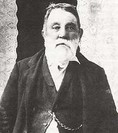Justice need not always grind slowly. Kudos to those that nipped this one in the bud.
The rest of the decision can be read at http://www.irstaxattorney.com/blog/2010 ... ims-u.htmlU.S. v. GOVEREH, Cite as 105 AFTR 2d 2010-XXXX, 01/05/2010
________________________________________
UNITED STATES of America, Plaintiff, v. Onessimus M. GOVEREH, Defendant.
Case Information:
Code Sec(s):
Court Name: United States District Court, N.D. Georgia, Atlanta Division,
Docket No.: No. 1:07-CR-131-JEC,
Date Decided: 01/05/2010.
Disposition:
HEADNOTE
.
Reference(s):
OPINION
United States District Court, N.D. Georgia, Atlanta Division,
ORDER and OPINION
Judge: JULIE E. CARNES, Chief Judge.
This case is presently before the Court on defendant's Motion for James Hearing [14], defendant's Motion in Limine [50], defendant's Motion for Judgment of Acquittal [98], and defendant's Motion for New Trial [99]. The Court has reviewed the record and the arguments of the parties and, for the reasons set out below, concludes that defendant's Motion for Judgment of Acquittal [98] and Motion for New Trial [99] are DENIED.
BACKGROUND
Onessimus M. Govereh (“Govereh” or “defendant”) ran the Norcross, Georgia office of Icon Tax Service from January 2, 2007 until February 15, 2007, when he was arrested. (Tr. [115] at 1024–25, 1086–90, 1118.) During that time, 107 personal income tax returns were filed electronically using Govereh's Electronic Filing Identification Number (“EFIN”), which he had obtained from the Internal Revenue Service (“IRS”). (Tr. [108] at 152–56; Tr. [113] at 586–89; Tr. [114] at 901, 970–71.) Each return bore Govereh's name as the tax preparer, and a copy of each return was saved on a password-protected computer he used. (Tr. [108] at 152–56; Tr. [113] at 586–89; Tr. [114] at 901.)
Govereh was charged with twenty counts of filing false claims based on twenty returns that were filed in January 2007 in violation of 18 U.S.C. § 287, the False Claims Act (FCA). 1. (Indictment [1].) Fourteen taxpayers testified that Govereh had prepared their taxes, and most of them told essentially the same story. (See generally Trs. [108], [112], [113], [114], [115].) Govereh sat at a computer and entered information while the taxpayers talked to him. (See, e.g., Tr. [113] at 299.) He entered false information on their returns, including false information about dependants, 2. earnings, and educational expenses. (Id.) Govereh also did not show his customers the returns he filed for them, so many were surprised to see the false information when they finally saw their returns. (Tr. [108] at 268–70; Tr. [112] at 301, 305, 327, 349; Tr. [113] at 507.) In all the returns, Govereh claimed that the taxpayer was entitled to substantial Telephone Excise Tax Refund (“TETR”) credits, even though he never discussed telephone use with any of them, nor did any of them provide any documentation about telephone use. Moreover, it is inconceivable that any individual would ever incur excise taxes in the amount claimed on their returns. 3.
Govereh's scheme utilized a process called Refund Anticipated Loans (“RAL”). A taxpayer whose return indicates that a refund is due can file for such a loan through an approved intermediary, such as Govereh, in advance of actually receiving the refund from the IRS. The bank that issues such a loan receives a certain commission from that loan and ultimately receives a check from the IRS in the total amount of the refund. A bank will not issue a loan in the full-agreed upon amount until the return is actually filed with the IRS, and, for the tax year 2006, no return could be filed electronically before January 12, 2007. Nonetheless, the participating banks-HSBC Bank and Santa Barbara Bank and Trust (“SBBT”)-permitted Govereh to print a check up to the amount of $1600 prior to filing the return, and once the return was actually filed electronically after January 12, the bank sent a check for the balance of any refund due. See generally Tr. [112] at 430, 435–36.
Govereh had his customers cash both the advance check and the second loan check at the check-cashing business next door and return with his fees, which were often several thousand dollars. (Tr. [108] at 270–73; Tr. [112] at 329–332, 352, 444–46; Tr. [113] at 489–93.) When the IRS ultimately refused to fund the claimed refunds and the banks contacted the customers about repaying their loans, many were surprised to learn that they had even been parties to a loan. (Tr. [112] at 329, 355; Tr. [113] at 493–94.) Both banks ultimately discontinued working with Govereh because of the high fees that he was charging his clients and because of a high loan-loss ratio. (Tr. [112] at 422; Tr. [113] at 683.)
Govereh was convicted by a jury on January 16, 2008, following a trial before this Court, on fourteen counts of presenting or causing false tax returns to be presented to the IRS. (Jury Verdict [93].) Defendant now moves for judgment of acquittal or for a new trial. (Mot. for J. of Acquittal [98]; Mot. for New Trial [99]).
